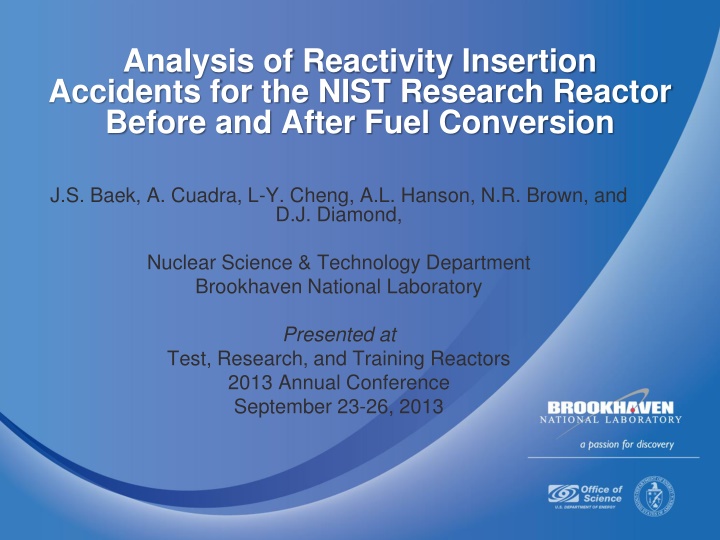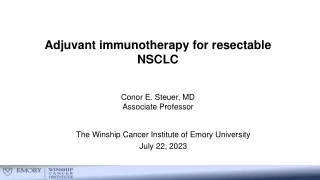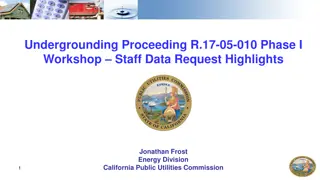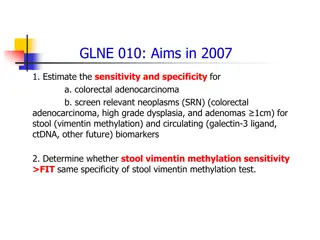
Analysis of Reactivity Insertion Accidents at NIST Research Reactor
Explore the safety analysis conducted for reactivity insertion accidents at the NIST Research Reactor before and after fuel conversion. The study includes background information, thermal-hydraulic analysis, and post-processing of simulation results to assess safety parameters. Details about the reactor, fuel conversion plan, and safety measures are discussed in depth.
Download Presentation

Please find below an Image/Link to download the presentation.
The content on the website is provided AS IS for your information and personal use only. It may not be sold, licensed, or shared on other websites without obtaining consent from the author. If you encounter any issues during the download, it is possible that the publisher has removed the file from their server.
You are allowed to download the files provided on this website for personal or commercial use, subject to the condition that they are used lawfully. All files are the property of their respective owners.
The content on the website is provided AS IS for your information and personal use only. It may not be sold, licensed, or shared on other websites without obtaining consent from the author.
E N D
Presentation Transcript
Analysis of Reactivity Insertion Accidents for the NIST Research Reactor Before and After Fuel Conversion J.S. Baek, A. Cuadra, L-Y. Cheng, A.L. Hanson, N.R. Brown, and D.J. Diamond, Nuclear Science & Technology Department Brookhaven National Laboratory Presented at Test, Research, and Training Reactors 2013 Annual Conference September 23-26, 2013
Outlines Background NBSR RELAP5 Model Thermal-Hydraulic Analysis Summary and Conclusions 2
Background A plan is being developed for the conversion of the NIST (National Institute of Standards and Technology) research reactor (NBSR) from high-enriched uranium (HEU) fuel to low- enriched uranium (LEU) fuel. Fuel conversion - HEU (93% 235U): U3O8 mixed with aluminum powder - LEU (19.75% 235U): A foil of U10Mo (uranium alloy with 10% molybdenum by weight) Need of safety analysis works for U.S. NRC conversion license of NBSR RELAP5 model has been developed to perform safety analysis for the NBSR. NBSR with LEU fuel and HEU fuel 3
Background (cont.) Presenting the results of safety analysis of reactivity insertion accidents Control rod withdrawal startup accident Maximum reactivity insertion accident Post-processing of simulation results to evaluate CHFR and OFIR A FORTRAN program was developed. Sudo-Kaminaga correlations for CHFR Saha-Zuber Criteria for OFIR 4
NBSR NBSR: National Bureau of Standard Reactor NBS: Old name of NIST Providing world-class capabilities in cold-neutron research - Materials science, chemistry, biology, neutron standards and dosimetry, nuclear physics, etc. 20 MW power Heavy water (D2O) moderated and cooled Inner and outer plena - A double plenum to provide optimized cooling to the core MTR Plate-type enriched fuel elements - Two fuel sections with an unfueled gap in the middle to reduce the fast neutron background in the neutron beam, resulting in the thermal neutron reaching a peak in the center of the gap - 17 plates in each section 5
NBSR (cont.) Cut-away view of NBSR core Al reactor vessel (3) 18 cm gap (5) between upper and lower fuel sections (18) Semaphore-type Cd shim arms (2) Cold neutron source (15) 6
NBSR (cont.) Two fuel sections 17 fuel plates in each section 0.51 mm thickness 6 cm width 28 cm fuel plate length 18 cm gap between two fuel sections NBSR Fuel Elements 7
RELAP5 NBSR Model Detailed NBSR vessel and core Primary piping from vessel outlet to inlet Primary and shutdown pumps Heat exchangers Rectangular heat structure to represent the NBSR fuel plates 30 fuel elements - 6 in inner plenum - 24 in outer plenum Point kinetics with 14 precursors 6 for fission product delayed neutrons 8 for photoneutrons No reactivity feedback is assumed (conservatively). Only shim arm reactivity is considered. 8
Thermal-Hydraulic Analysis Accidents Maximum hypothetical accident (MHA), Insertion of excessive reactivity, Loss of coolant, Loss of coolant flow, Loss of normal electrical power, etc. Presenting analysis results of insertion of excessive reactivity Control rod withdrawal startup accident - ? ?? ? ? ? (50 pcm) per second - Initial power: 100 W Maximum reactivity insertion accident - ?.??? ? ? (500 pcm) in 0.5 s - Initial power: 20 MW Two limiting points in a fuel cycle - Startup (SU) and End-Of-Cycle (EOC) conditions 10
Thermal-Hydraulic Analysis (cont.) Control rod withdrawal startup accident Power increases almost exponentially. Reactor trip at 26 MW Peak power - 40.2 MW with HEU at EOC - 37.6 MW with HEU at SU - 42.0 MW with LEU at EOC - 38.2 MW with LEU at SU - Different negative reactivity insertion rate after reactor trip 11
Thermal-Hydraulic Analysis (cont.) Control rod withdrawal startup accident (cont.) Peak power - Shim arms start dropping - From 23 at SU - From 41 (fully withdrawn) at EOC 12
Thermal-Hydraulic Analysis (cont.) Control rod withdrawal startup accident (cont.) Power increases more rapidly with LEU fuel - Smaller delayed neutron fraction and shorter neutron lifetime Power increases faster at SU - Shorter neutron lifetime as a result of shim arm presence 13
Thermal-Hydraulic Analysis (cont.) Control rod withdrawal startup accident (cont.) Cladding temperature PCT - 399 K with HEU at EOC - 397 K with HEU at SU - 402 K with LEU at EOC - 396 K with LEU at SU Small temperature rise - 100 K with LEU at EOC 14
Thermal-Hydraulic Analysis (cont.) Control rod withdrawal startup accident (cont.) Critical Heat Flux Ratio (CHFR) - A post-processing Minimum CHFR - 2.15 with HEU at EOC - 2.19 with HEU at SU - 2.04 with LEU at EOC - 2.21 with LEU at SU - Larger than 1.78 and 1.86 (probability greater than 99.9%) - BNL performed a statistical analysis with a large size of sampling to quantify uncertainties of key parameters of CHF. 15
Thermal-Hydraulic Analysis (cont.) Control rod withdrawal startup accident (cont.) Onset-of-Flow Instability Ratio (OFIR) - A post-processing Minimum OFIR - 3.63 with HEU at EOC - 3.49 with HEU at SU - 3.54 with LEU at EOC - 3.50 with LEU at SU - Much larger than 1.58 and 1.73 (probability greater than 99.9%) - BNL performed a statistical analysis with a large size of sampling to quantify uncertainties of key parameters of OFI. 16
Thermal-Hydraulic Analysis (cont.) Maximum reactivity insertion accident Reactor trip at 26 MW Peak Power - Highest peak power of 34 MW with LEU at EOC Cladding Temperature - Highest PCT of 397 K ( T = 27 K) with LEU at EOC 17
Thermal-Hydraulic Analysis (cont.) Maximum reactivity insertion accident (cont.) Minimum CHFR - Smallest minimum CHFR of 2.25 with LEU at EOC Minimum OFIR - Smallest minimum OFIR of 3.25 with HEU at SU 18
Summary and Conclusions A detailed RELAP5 model has been developed to analyze the NIST research reactor (NBSR) with fuel conversion from HEU to LEU. Insertion of excessive reactivity accidents have been analyzed. Control rod withdrawal startup and maximum reactivity insertion accidents. Two limiting points (SU and EOC) in a fuel cycle have been considered. A post-processing has been performed to evaluate CHFR and OFIR. Reactor power, peak cladding temperature, minimum CHFR, and minimum OFIR have been investigated. All PCTs are lower than blister temperature. All minimum CHFRs and OFIRs are very high. 19
Summary and Conclusions (cont.) Conclusions The integrity of the NBSR fuel elements is preserved in all cases with both LEU and HEU fuels. NBSR still has a large safety margin with LEU core. 20









